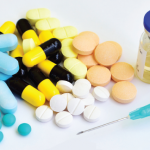The proper way to code this visit is 99214-25, 96413, 96415, J1745 x60-JW, 90775, J2920-, 96401, J9250 x3, 90761-59, J7130, 99214-25.
ad goes here:advert-1
ADVERTISEMENT
SCROLL TO CONTINUE
- 99214-25: Because the patient had additional diagnoses of fatigue and joint pain during a scheduled methotrexate injection and infliximab infusion, the physician performed a detailed problem history, detailed examination, and a medical decision making of moderate complexity office visit with a modifier -25 appended.
- 96413: This drug administration code indicates the infusion was 30 minutes.
- 96415: This drug administration code indicates the remainder of the infusion time of five minutes.
- J1745x60-JW: The HCPCs code for infliximab (10 mg) and the amount mixed (60 x10 =600). The JW indicates that wastage existed, and it should be documented in the patient’s chart.
- 90775: Because there was an allergic reaction to the infliximab, this IV push code was used with the methylprednisolone, sodium succinate. An initial substance/drug code was already used (96413), and this IV push code was used to indicate a new substance. It must be listed separately in addition to the code for the primary procedure.
- J2920: Injection methylprednisolone sodium succinate, up to 40 mg.
- 96401: Chemo, injection SC/IM drug administration code for Methotrexate sodium, 5 mg.
- J9250 x3: Methotrexate sodium, 5 mg to 15 mg was used for this scenario so x3 is used to signify 15 mg.
- 90761-59: Normal saline was also used to flush out the infliximab from the patients system, and this drug administration code represents each additional hour used. The -59 modifier is used to indicate that this was an additional substance for the allergic reaction.
- J7130: Hypertonic saline solution, 50 or 100 meq, 20 cc per vial.
Note: Medicare has developed a reimbursement policy for the administration of single-use drugs or discarded biological material for both ASP and CAP drugs, effective July 1, 2007. For billing purposes, the JW modifier is used to indicate discarded medication not administered.
